Having worked in the hi-fi/AV industry for as long as I have, it’s very common to have endless conversations about improving TV audio. Nine times out of 10, this leads to a discussion about soundbars, as they are, if we’re being completely honest, the easiest, simplest, and most convenient solution to the problem.
The alternatives, such as AVR systems or two-channel amp setups, undoubtedly offer a better experience (and are more fun for me to spec out), but they ultimately cost more and require more effort to set up and plan, as there’s a lot more to consider.
Now, I’m a fervent believer in the benefits of a 2.0 or 2.1 setup – or even a straightforward 3.1 or 5.1 setup – as the way forward. However, I can fully appreciate and respect the appeal of soundbars. There are times I’ll look at my own setup and think, “That’s a lot of stuff.” Like most of us, I occasionally go down rabbit holes, imagining what a condensed setup would look like.
I don’t plan on giving up my system any time soon, but if I were to, I’ve put together a list of the nine best soundbars that would meet my needs and that I’d be happy to live with.
In a hurry?
Here are our favourites!
| Sennheiser AMBEO Max | Excellent virtual surround and the best-sounding soundbar for music, movies, and anything else you could want from a soundbar. | Check the current price |
| LG S95TR | Full 9.1.5 surround setup, with wireless connections to the rears and sub for minimal clutter/hassle with setup. | Check the current price |
| Polk Signa S4 | Excellent performance for the money, three-channel bar with Atmos speakers makes it a great choice for great performance on a budget, especially for environments like terraced houses and apartments. | Check the current price |
Why we’ve chosen these soundbars
The main criteria, as mentioned above, is based on experience: identifying the best soundbars in terms of performance. These are models that not only compete with but, in some instances, even surpass my own setup. They also objectively offer excellent performance, combining impressive sound quality with practical features and, ultimately, convenience.
For context, I use a Naim stereo amp and Focal floor-standers, which have some limitations when it comes to certain eARC audio formats. Being a two-channel setup, it merges surround, centre, and height channels into left and right outputs.
In contrast, many of the soundbars listed below include physical speaker configurations and internal processing that enable three channels, Atmos signal output, and, in some cases, surprisingly convincing virtual surround sound.
Another thing I’ve considered is cost. It would be easy to suggest simply going for the most expensive option, but this list prioritises pure performance – both in terms of sound quality and features – over price alone.
The best soundbars
1. Sennheiser AMBEO Max Soundbar
 Key features
Key features
- 13 dedicated full-range drivers
- Room calibration software built in
- Covers 30Hz – 20KHz
Pros
- Excellent wide sound stage
- Convincing virtual surround
- Atmos functionality
Cons
- It’s massive
The Sennheiser Ambeo MAX – formerly “the Ambeo” before the range expanded – is nothing short of fantastic. Hand on heart, I can say the price is justified. That said, let’s address the obvious: it’s massive, heavy, and expensive. For most setups, it’s overkill, and not everyone will need something this powerful. But if you’re after the ultimate one-box soundbar solution that delivers truly immersive audio, this is the one to beat.
I still remember the first time I set one up. Without bothering with the calibration mic, I ran it in its default “standard” mode. The soundstage is impressively wide, the bass is deep and punchy, and the Atmos signal is both accurate and convincing.
The standout feature? Its virtual surround sound. Many soundbars claim to do it well, but the Ambeo MAX truly delivers. If you’ve got the space, budget, and desire for top-tier sound, this is, objectively, the best soundbar available.
2. LG S95TR 9.1.5 Dolby Atmos Soundbar with Rear Speakers and Wireless Subwoofer
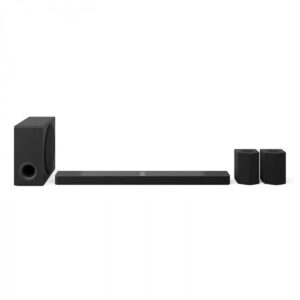 Key features
Key features
- Fully wireless compatibility with LG smart TV
- DTS support and Dolby Digital codec enabled
- Full 9.1.5 surround setup
Pros
- Full wireless 9.1.5 system
- Supports wireless connectivity to LG TVs via WOW Orchestra
- Full DTS Support
Con
- To get the most out of it you need to have an LG smart TV
The LG S95TR ticks many of the same boxes as the Ambeo MAX but takes a slightly different approach. Where the Ambeo relies on clever engineering and sheer muscle from its speaker setup, the LG opts for a more traditional route. It includes physically separate rear speakers and a subwoofer, all provided as part of the package. You get everything you need straight out of the (rather large) box.
In terms of sound, the LG S95TR is excellent. Its stereo width is impressive, and the separation of front channels ensures the centre channel for speech comes through clearly, without compromising the stereo image. The subwoofer does a fantastic job of subtly handling the low end, picking up the slack from the soundbar without drawing too much attention to itself.
The rear speakers are equally impressive. Their use of a Wi-Fi connection for communication solves the age-old issue of the rear speakers dropping out, and the only way you were getting through a movie was if the stars aligned.
3. Polk Signa S4 Atmos Soundbar with Wireless Subwoofer
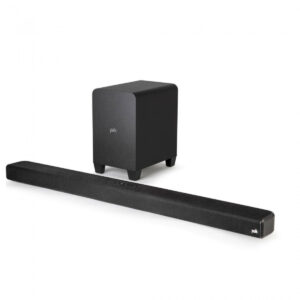 Key features
Key features
- Dolby Atmos 3.1.2 sound bar
- Wireless subwoofer included
- Various EQ and sound modes, including Movie, Music, and Night mode
Pros
- True 3.1.2 soundbar package
- Simple and feature-packed
- Wireless subwoofer is a great bonus
Cons
- I’m not a fan of the remote control design
I love the Polk Signa S4. This is very much a “fire-and-forget” soundbar – everything from regular terrestrial TV broadcasts to 5.1 content will instantly sound better.
Your everyday TV audio gets a noticeable lift thanks to the included subwoofer, which adds depth to the low end. But where the Polk Signa S4 really shines is with 5.1 content. That dedicated centre channel is a game-changer, especially for dialogue-heavy shows. The surround channels are summed left and right, creating a well-rounded experience, but it’s the third channel doing the work.
The coolest thing, in my opinion, about the Signa S4 is that it’s not an outrageous price. All I’d say is make sure you set it up with HDMI Control, as the included remote is a bit poor in my opinion.
4. Denon DHT-S517 Soundbar with Wireless Subwoofer
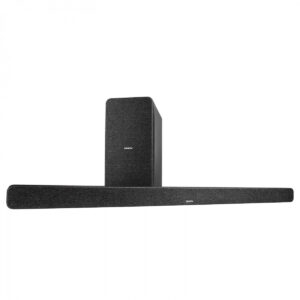 Key features
Key features
- Three-channel soundbar with a dedicated centre channel
- Wireless subwoofer included
- Two Atmos channels, supporting 3D audio
Pros
- 1.2 soundbar with wireless subwoofer
- Great soundstage
- Dialogue enhancer works quite well
Cons
- Subwoofer can get a little boomy if not placed well
In the interest of full transparency, you might look at the Polk Signa S4 and the Denon DHT-S517 and notice they’re remarkably similar on paper – and you’d be right. Both come from the same parent company, meaning they share a lot of the same R&D and engineering expertise.
So, why would you pay more for the Denon? Simply put, it’s the more refined option. While the Polk Signa S4 is excellent for its price, the DHT-S517 edges ahead in sound quality. The subwoofer delivers tighter, more controlled bass, and the overall performance of the soundbar is clearer, more powerful, and more precise. It’s a soundbar that feels better engineered and polished, which is what you’d expect from Denon.
That said, I still rate the Polk higher – but only because of its price point. Once you know the Signa S4 is essentially a “dressed-down” Denon, it’s hard to ignore the incredible value it offers. If I had to choose, I’d pick the Denon for its superior sound, I love them both for what they offer, but I also love an underdog.
5. Monitor Audio SB-4 Passive Soundbar
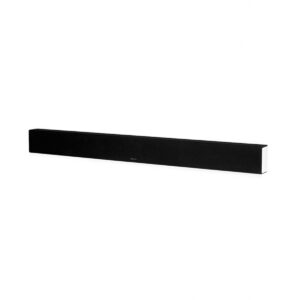 Key features
Key features
- Tweeter and woofer designed borrowed from Monitor Audios hi-fi range
- Designed for 70″ screens and larger, smaller versions are the SB-3 and SB-2
- Designated Left, Right, and Centre speaker cable terminals
Pros
- Stylish discrete design
- Three channels with 4″ drivers
- Deceptively deep bass response for a passive bar
Cons
- Requires an amp to use
While this is a niche product, the Monitor Audio SB-4 breaks away from the usual concept. As a passive soundbar, it requires an amplifier to work – much like a pair of hi-fi speakers. This design combines your left, centre, and right channels into a single unit, often referred to as an LCR, offering a sleeker alternative to the traditional front-stage setup.
Its compact, minimalist form makes it a great choice for setups when you want hi-fi performance without the clutter. I’ve used the SB-4 on installations where the AV receiver is tucked in a comms cupboard. The bar delivers excellent clarity and depth, thanks to the four-inch drivers on each channel.
As a passive soundbar, the rest of your setup – amp, room acoustics, and wall mounting – plays a crucial role in unlocking its full potential. You may want to add a subwoofer, as the SB-4 shines in the midrange and treble.
6. Sennheiser AMBEO Plus Soundbar
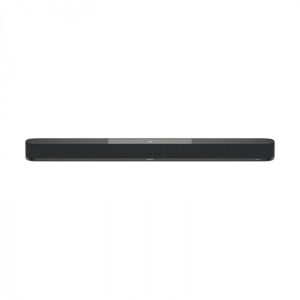 Key features
Key features
- Integrated room calibration software
- 3D audio technology
- Seven dedicated full-range drivers and two dedicated closed bass drivers
Pros
- Great front-stage audio
- 1.4 Virtualisation
- Physical Atmos speakers
Cons
- Bit difficult to get it networked fully
With the introduction of the AMBEO Plus, the AMBEO soundbar range now offers a more compact alternative to the flagship AMBEO Max. By comparison, this is a much more “normal” soundbar in terms of size, scale, and sonic performance. It’s far more practical for everyday living spaces – standing at half the height and 20cm shorter in width than the Max.
The AMBEO Plus supports all the expected formats but stands out by almost crossing into lifestyle product territory. Features like Tidal Connect, internet streaming, and a dedicated app make it an all-in-one audio solution for your living room or wherever you place it.
While it uses virtual surround imaging for spatial effects, it excels in delivering hardware-driven performance. With nine speakers covering left, right, centre, and Atmos channels, it creates rich, immersive sound without relying too heavily on digital trickery.
7. DALI KATCH One Soundbar
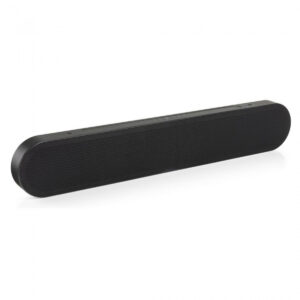 Key features
Key features
- HDMI ARC, 2x Optical, 3.5mm mini jack inputs
- 10 drivers
- Six active and four passive drivers
Pros
- Slim and compact.
- Different sound/EQ modes
- Woofers operate by using air dispersion from the main drivers, allowing for greater depth in sound
Cons
- Needs a subwoofer
The DALI KATCH One is a sleek soundbar perfect for design-conscious spaces where style and simplicity matter as much as performance. With its slim, minimalist design, the DALI KATCH One is ideal for rooms where aesthetics are a priority. Unlike passive soundbars like the Monitor Audio SB-4, the KATCH One is an active soundbar. This means it has built-in amplifiers and only requires power and a TV connection.
Similar to the SB-4, which I’ve used in installations where clients wanted a stylish, compact solution without the budget for a full LCR setup (which is fair enough), its design makes it easy to mount discreetly under a TV.
That said, the KATCH One’s slim profile does mean there’s limited cabinet space for low-end frequencies, so it will benefit greatly from adding a subwoofer. But if bass isn’t a top priority, this soundbar is great for its profile and performance.
8. JBL Bar 1000 7.1.4 Dolby Atmos Soundbar with Wireless Subwoofer
 Key features
Key features
- 880W total power output
- Two 2.75” atmos drivers
- DTS:X support
Pros
- Detachable battery-powered wireless rear speakers are a convenient solution for temporary surround setups
- Wireless 10” subwoofer included
- Pure-voice technology is pretty good
Cons
- With the rear speakers removed, the bar isn’t as aesthetically pleasing
You’ve probably noticed a recurring theme with many of these soundbars: Atmos channels, wireless subs, rears, and virtual surround. The JBL Bar 1000 fits right into this pattern and is very similar to the LG S95TR in terms of features. Both have built-in Atmos speakers, and the JBL offers seven audio channels compared to the LG’s nine.
Where things get a bit divisive for me is the wireless, battery-powered rear speakers. The technology has improved significantly, but it still reminds me of the early concepts and iterations – when dropouts, pairing issues, and general frustration were common. Going through that routine again would definitely add a few more grey hairs.
To be fair, the JBL Bar 1000’s implementation is solid. It’s a clever design choice that works well for most people. So, if you want a sound bar packed with functionality and the flexibility of wireless surrounds without plugs, this is a winner.
9. Naim Mu-So 2nd Generation Wireless Speaker System
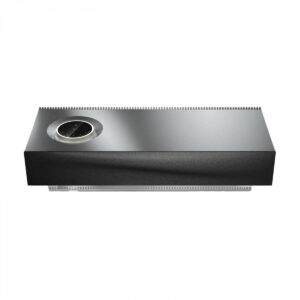 Key features
Key features
- Hi-res streaming platform
- HDMI ARC control
- Remote app customisation and functionality
Pros
- Multi-room connectivity
- Hi-fi grade stereo sound
- Wireless streaming and app control
Cons
- Not quite – but similar to – a soundbar
For the final entry on the list, I’ve chosen the Naim Mu-so – which, I’ll admit, isn’t technically a soundbar. When Naim designed the Mu-so, they weren’t envisioning it being used purely as a soundbar, and frankly, that’s not its main purpose.
What sets the Mu-so apart from anything else here is its ability to be both a high-quality wireless speaker/hi-fi system that also handles TV audio. It doesn’t offer Atmos or surround sound, but what it does do is stereo – and it does stereo exceptionally well.
If you’re looking for a traditional soundbar or something with multi-channel audio, this isn’t the product for you. But if you want a lifestyle product that delivers hi-res music playback while also stepping in as a soundbar, this is the one.
Oh, and it looks like something straight out of Blade Runner – so there’s that.
How to choose the best soundbar for you
The most important thing to consider is your specific needs and reasons for looking at a soundbar.
Are you struggling to discern dialogue? Do you simply want an upgrade from your TV’s built-in speakers that can also serve as a home audio solution? Or are you looking for a soundbar that delivers a true home cinema experience, making you feel like you’re at the big screen without leaving the house? Identifying your priorities will help narrow down the best option for you.
Once you’ve defined your goal, you’ll need to consider factors like size, placement, and features such as Dolby Atmos, wireless rear speakers, or virtual surround. Naturally, certain features align with specific needs, but the key is to focus on what suits your particular setup.
As tempting as it might be, I wouldn’t recommend the AMBEO Max solely for regular terrestrial TV viewing, but I would for an all-in-one home cinema solution. Likewise, I wouldn’t suggest the Dali Katch One for a full cinematic experience, but it works great as a sleek soundbar for regular TV usage. It’s all about purpose and setting realistic expectations based on what each product offers.
Obviously, you’re free to make your own choices – if you want to use an AMBEO Max for the latest episodes of Coronation Street, go for it!
That said, most conversations I’ve had about soundbars focus on improving spoken dialogue clarity and overall audio quality without simply increasing volume. If that’s your main concern, you’ll likely find the best options in the middle of the list, such as the Polk and Denon models. I’d consider these the most general-purpose soundbars – anything beyond that starts to get a bit more specialised.
FAQs
How do I connect a soundbar to my TV?
There are three main ways to connect a soundbar to a TV: via a 3.5mm cable from the TV’s headphone port (if available), an optical connection for a limited digital format, or HDMI ARC. These days, HDMI ARC is the most common and convenient option, as it offers quality-of-life improvements that the others don’t – such as allowing you to control the soundbar with the TV remote and enabling automatic power on/off.
How many watts are good for a soundbar?
If you have a particularly large room or enjoy strong bass and low-end frequencies, consider larger soundbars or those that disclose their wattage – aiming for at least 100W for the soundbar alone. Most models typically range between 75W and 350W, which is more than sufficient for most setups.
How much should you spend on a soundbar?
The right budget for a soundbar depends on what you need from it, but a good starting point is around £200. This price range typically covers the essentials for most users. If your budget is tighter, brands like Majority offer affordable options with a good balance of features and performance. However, if you’re after high-end audio quality, there is a clear correlation between price and performance – spending more generally means better sound, build quality, and features.
Final thoughts
The truth is, you don’t have to go all-out with soundbars. Even affordable options like the Polk are a massive step up from your TV’s built-in speakers and won’t break the bank. But it’s also worth taking a moment to consider the room you’ll be using it in and your living situation.
At the end of the day, though, it’s about balance (as is everything). Whether you’re after a simple upgrade or chasing high-end audio performance, hopefully, my musings, tangents, and thoughts on the best soundbars have given you a better idea of what might work for you.
You may have noticed that some of these soundbars come with subwoofers. If these appeal to you, find more on our list of the best soundbars with subwoofers.
If you’re considering the full AVR route with an LCR like the SB-4 or a more traditional setup, take a look at our guide to AV receivers. And if you’re going all-in, you might want to check out this piece on in-ceiling speakers for tips on creating a fully immersive setup.

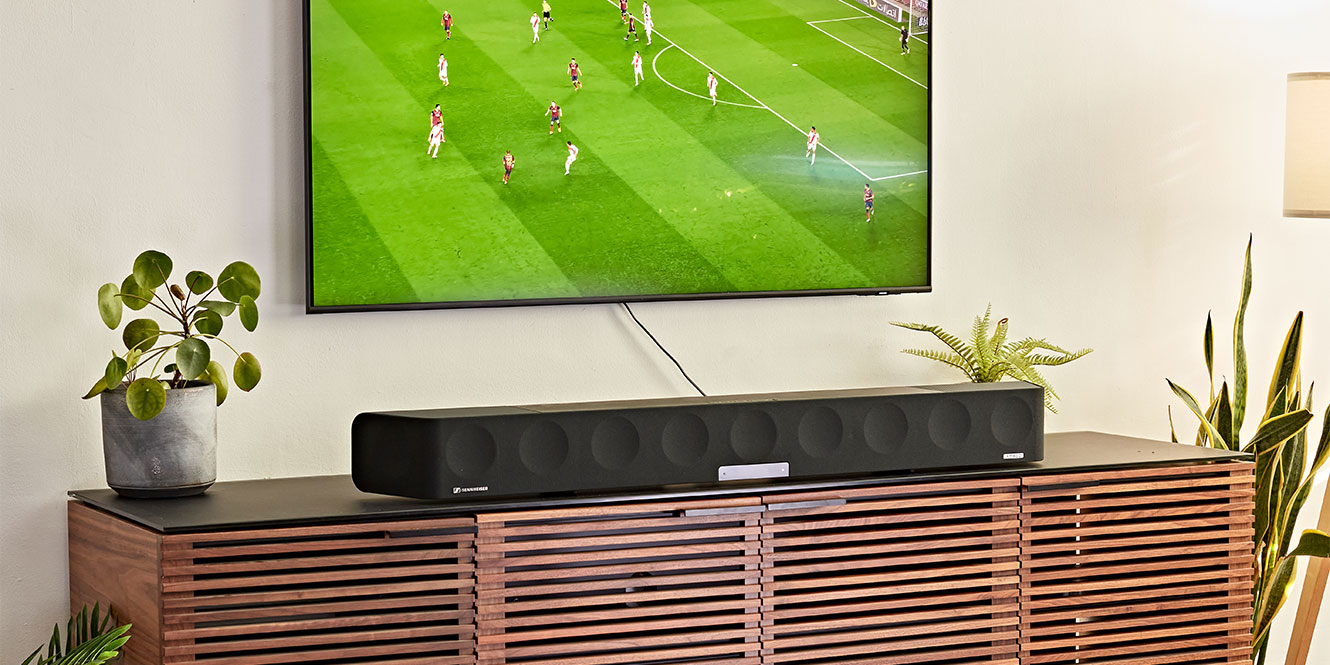

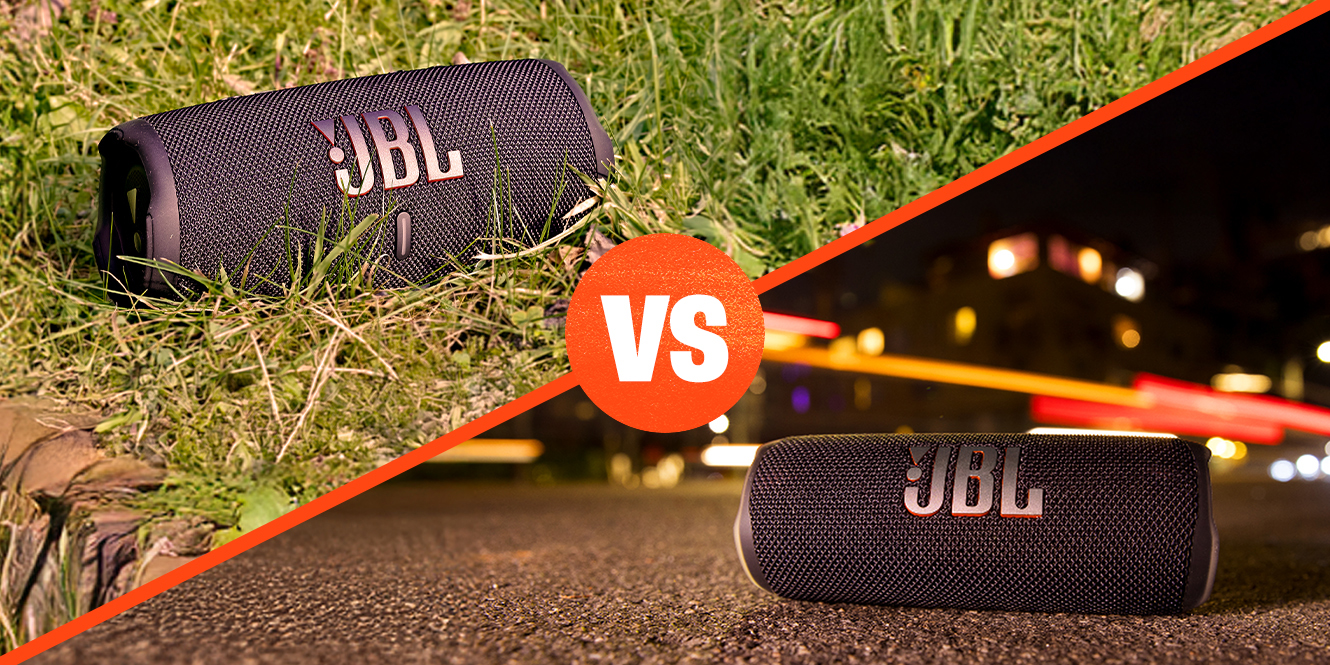
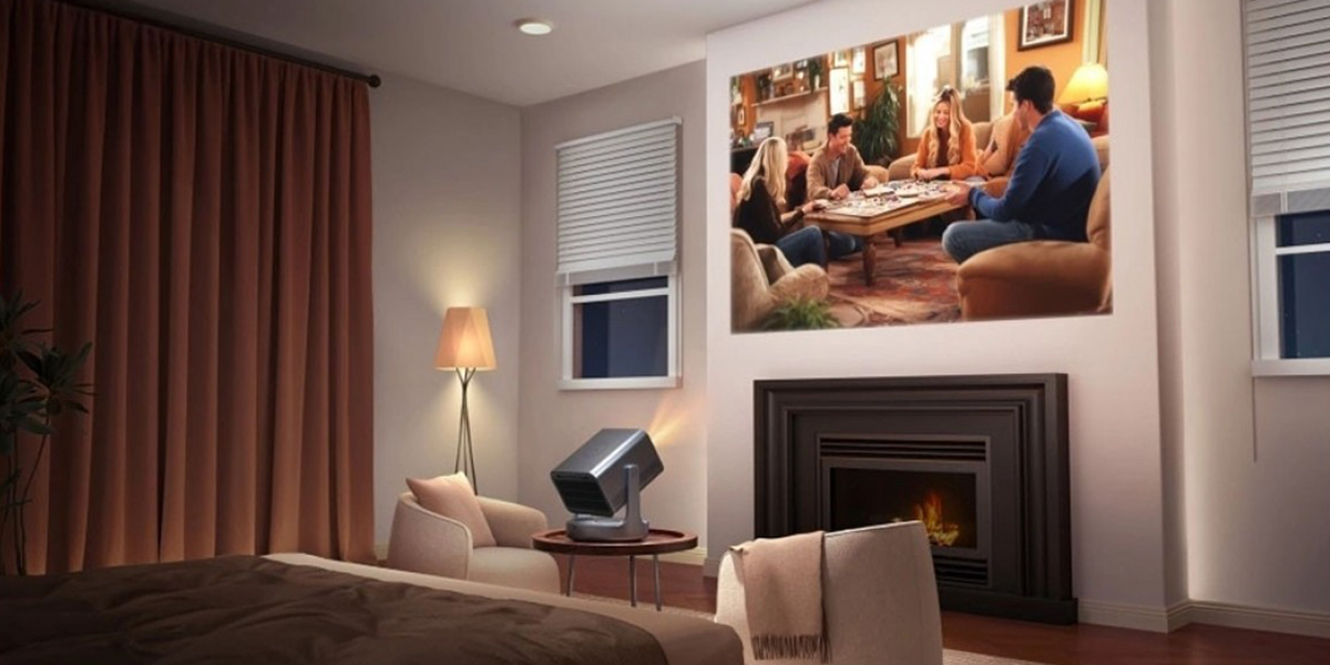

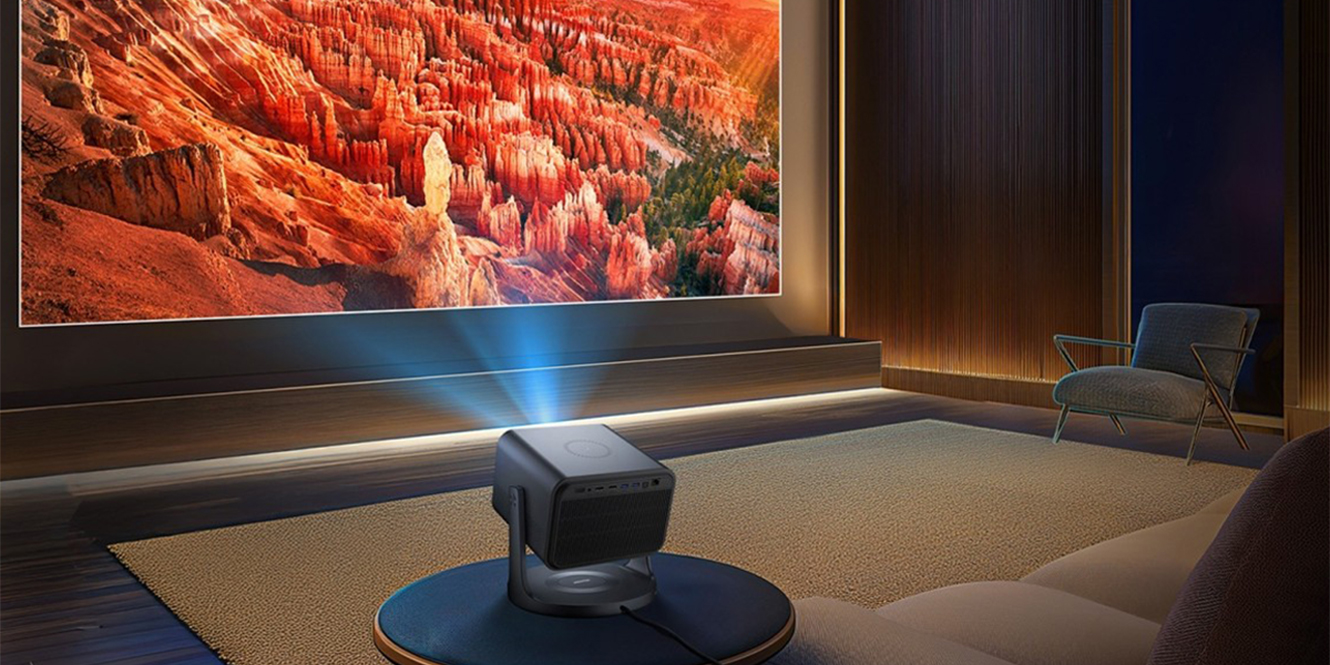




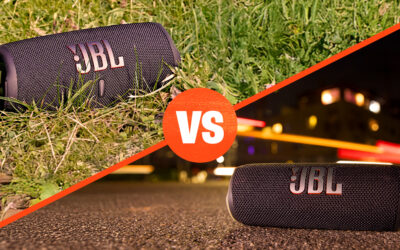
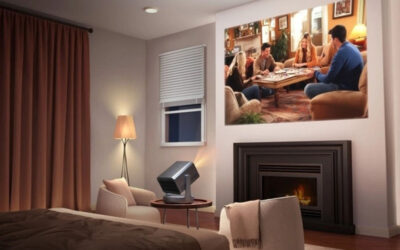
0 Comments